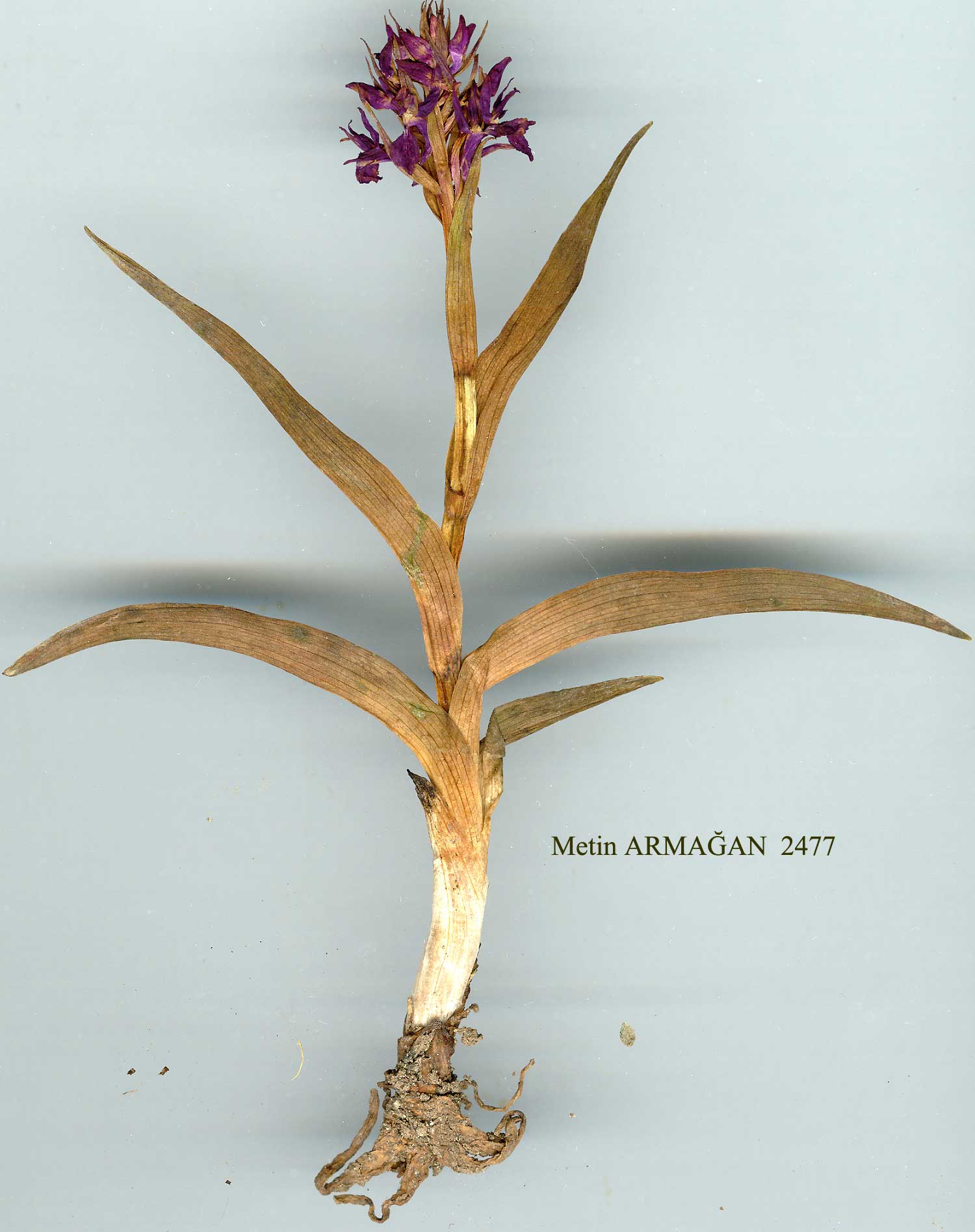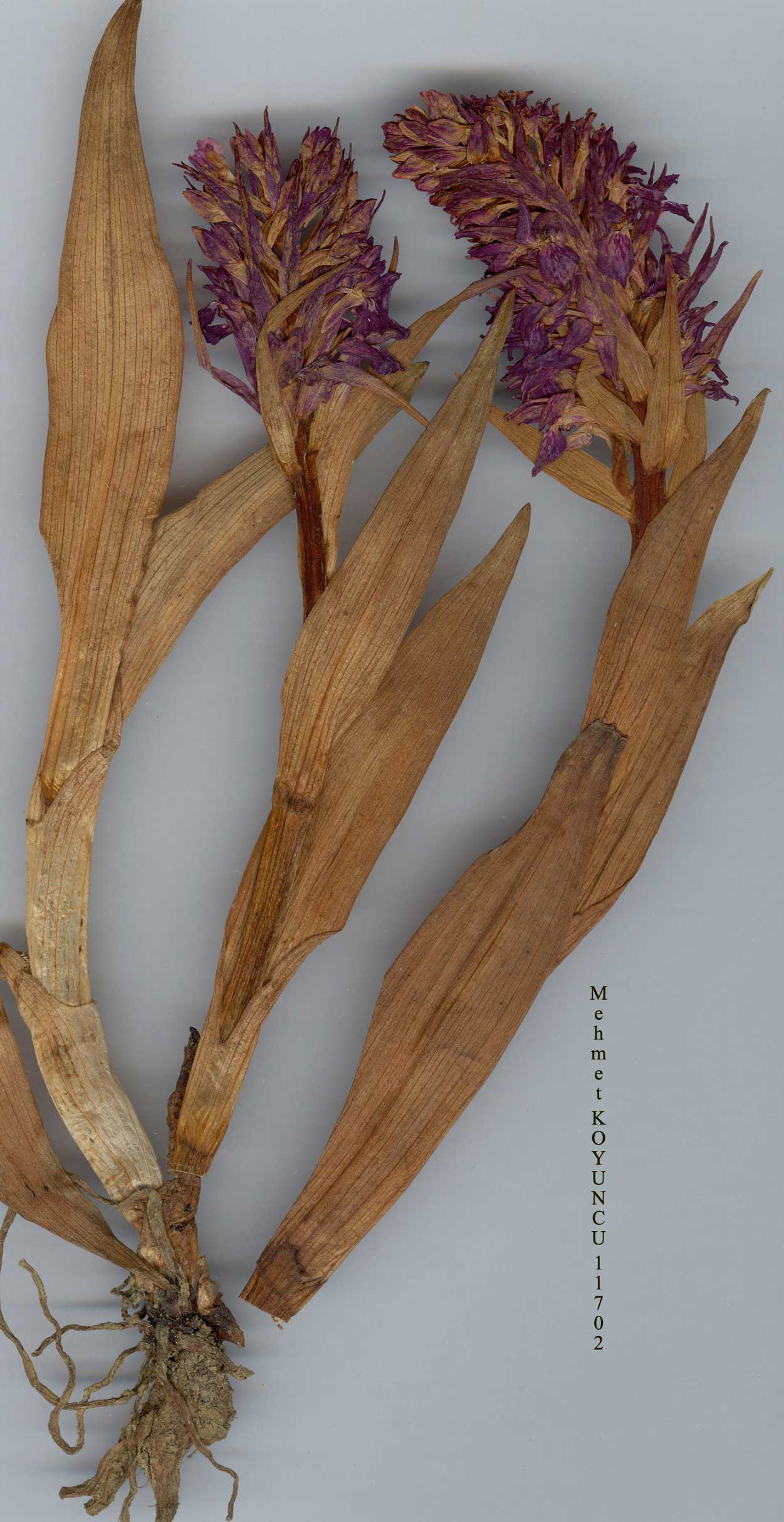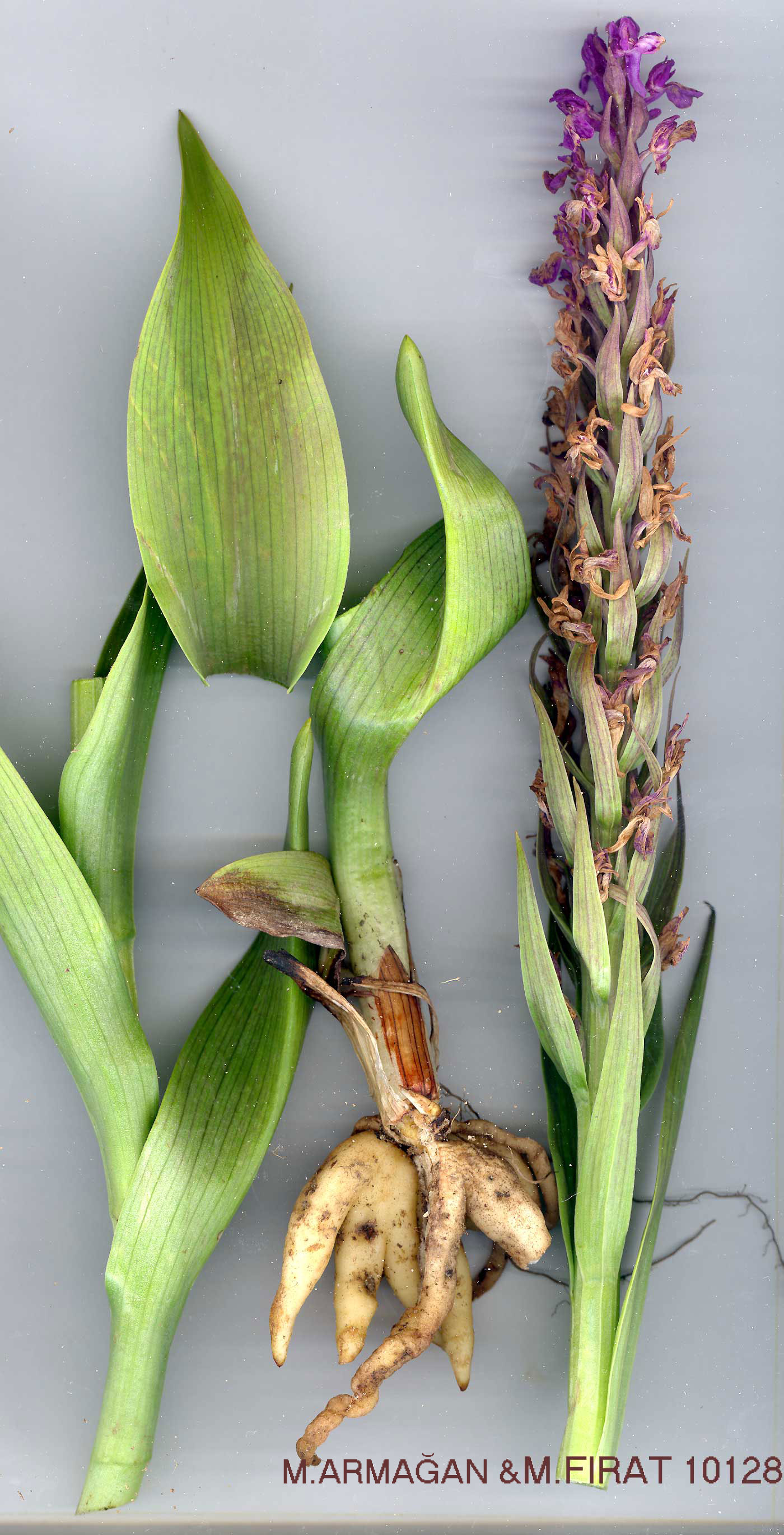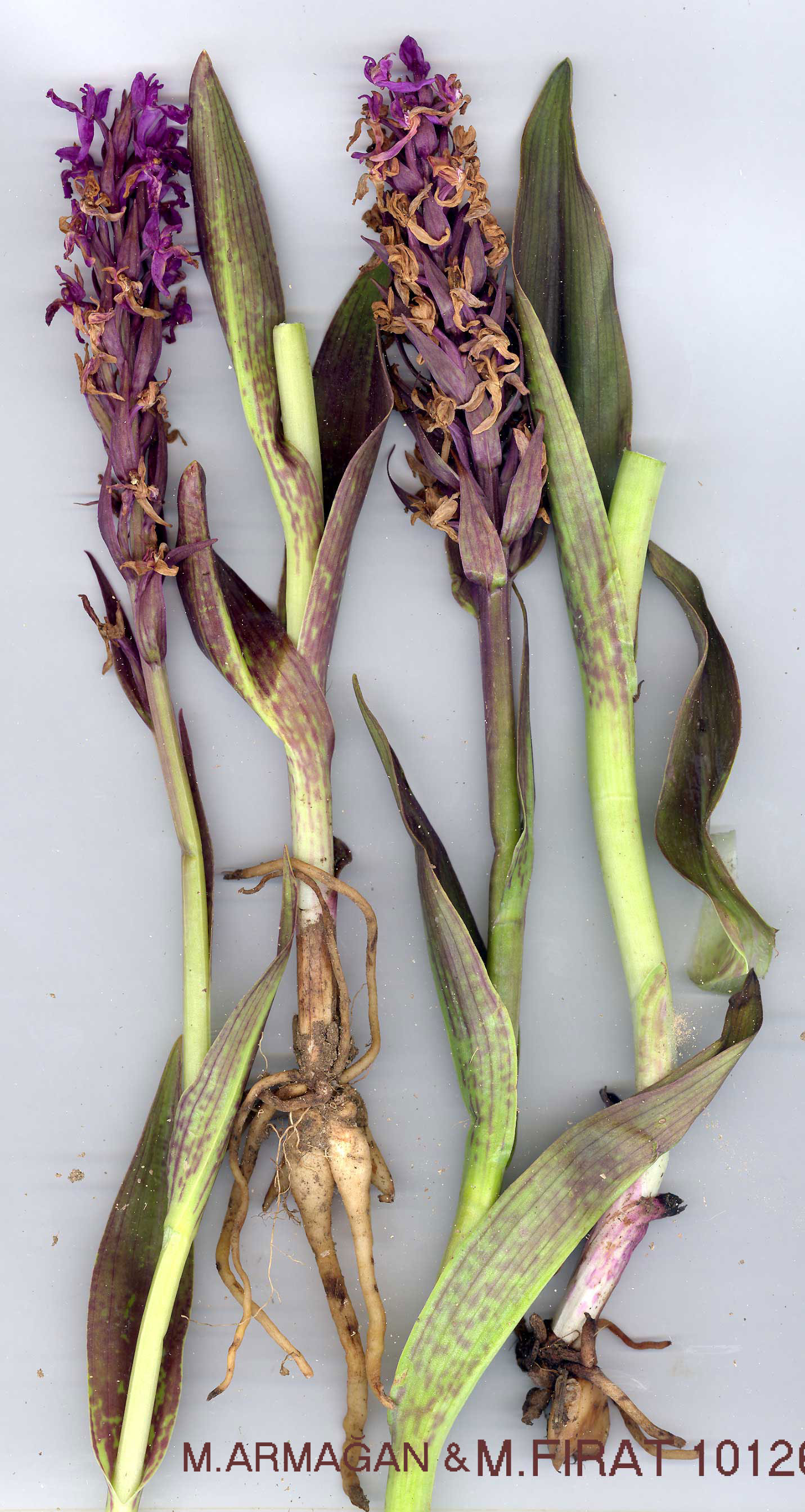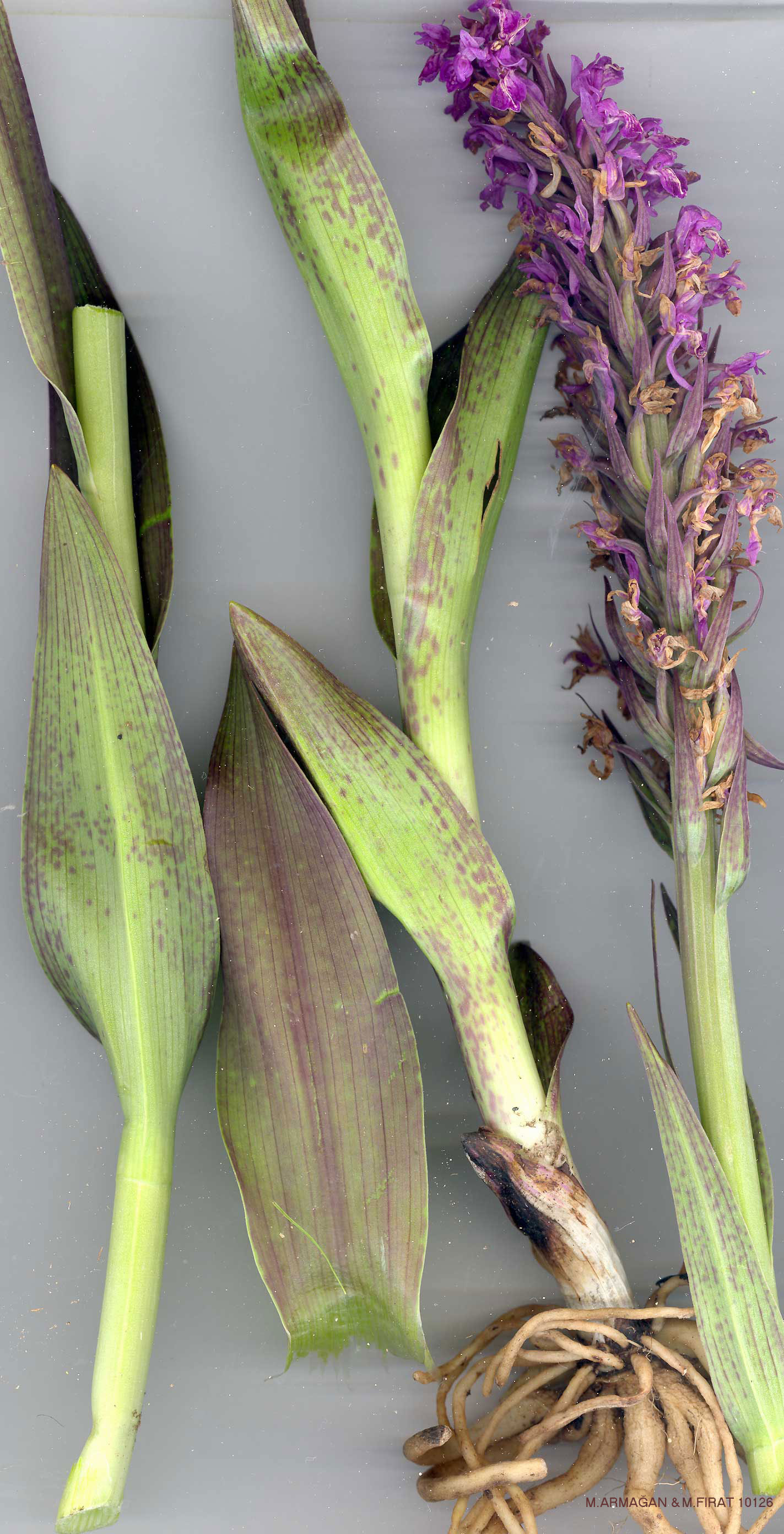| Orchidaceae |
|---|
|
| D. chuhensis Renz &. Taub. in Fl. Turkey 8:564 (1984). Syn: D. renzii Aver. in Bot. Zhurn. 68(7):893 (1983) nom. inval. non D. x renzii H. Baumann & Kûnkele(1981). Ic: Rech. fil. Fl. Iranica 126: t. 69 (1978), as D. cruenta. Plants usually robust. Cauline leaves distant, lanceolate to oblong-lanceolate, with dense, rather small dark purplish-violet spots above and sometimes beneath, occasionally tinged dingy purple towards apex. Spike dense, cylindrical. Bracts lanceolate, lower ± exceeding flowers, densely spotted or tinged purple. Flowers similar to D. umbrosa;labellum subentire or ± 3-lobed, rather faintly marked with dots and lines. Spur somewhat shorter than ovary. Type: [Turkey B9 Van] inter Başkale et Hoşap E. jugo Cuhgedigi, 25 km a finibus Persiae, 2200-2300 m, inpaludibus, Renz 10972 (holo. Hb. Renz!). Endemic, ir .-Tur. element. Averyanov{loc. cit., 1983) separated the above specimen from D. cruenta. On the basis of our own field observations we are inclined to agree with this view, but the whole spotted-leaved complex from S.E. Anatolia, including D. vanensis Nelson p.p. (q.v.), is still poorly understood. |



